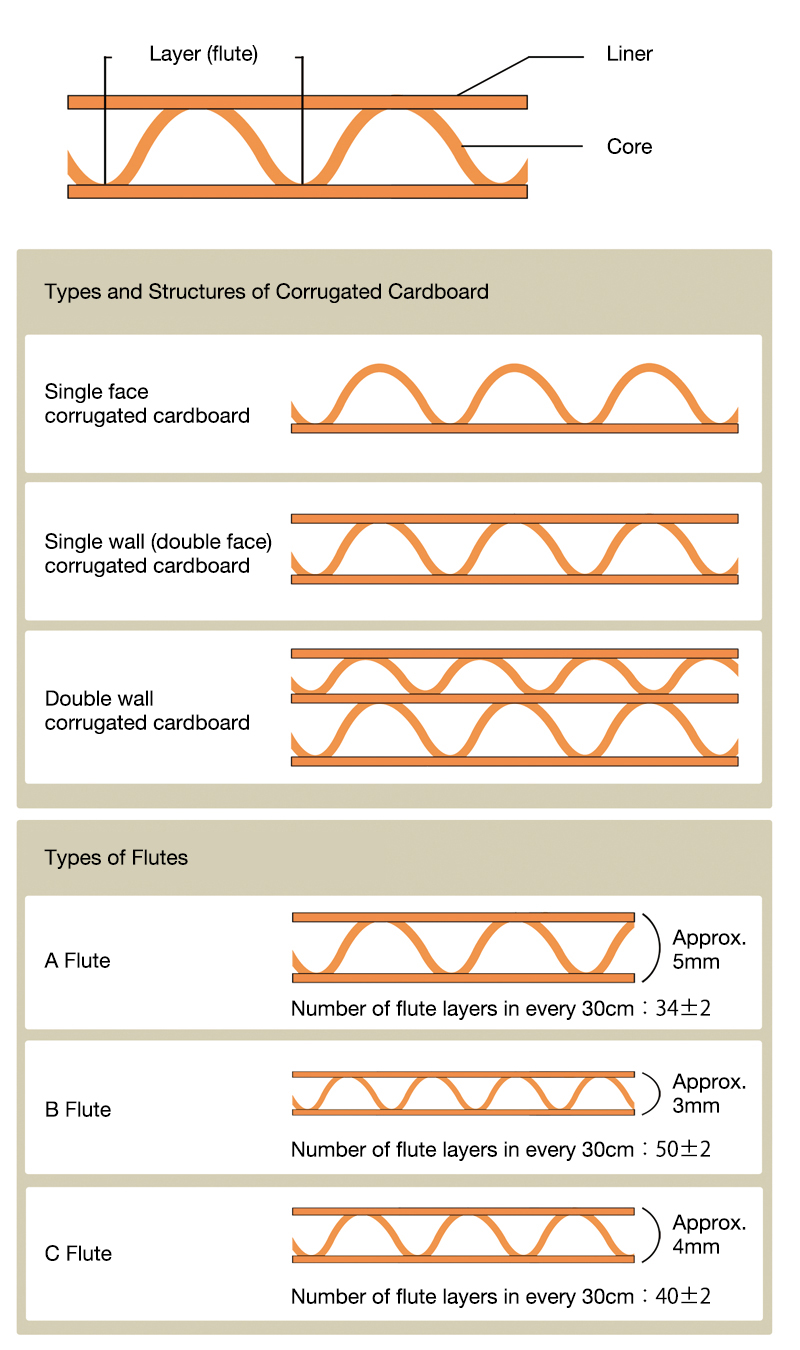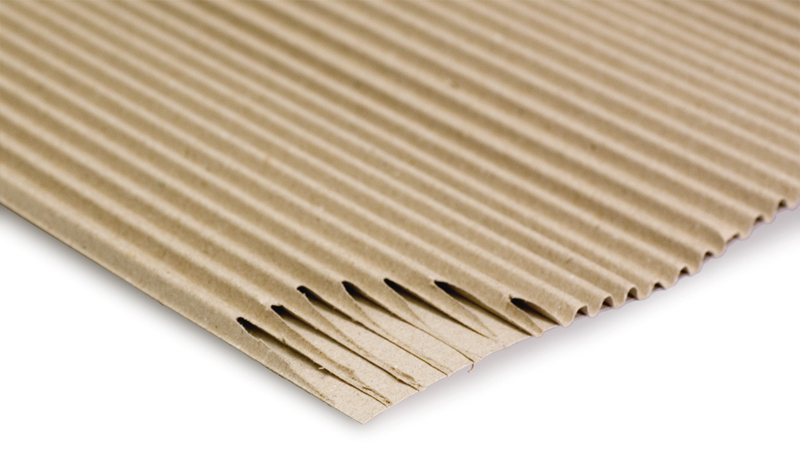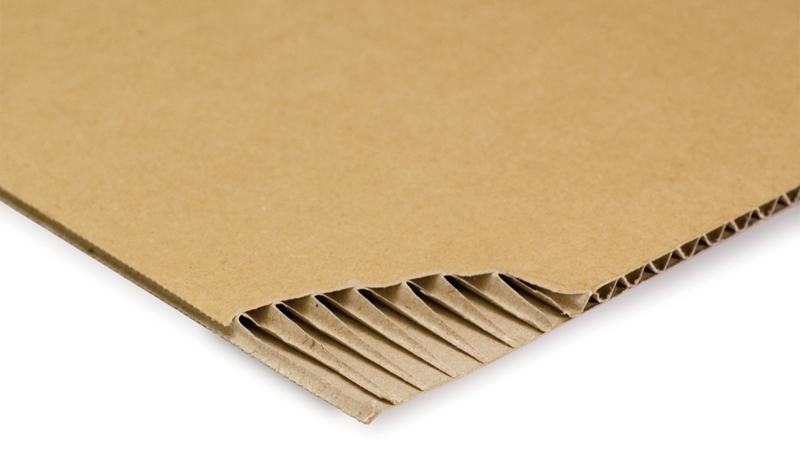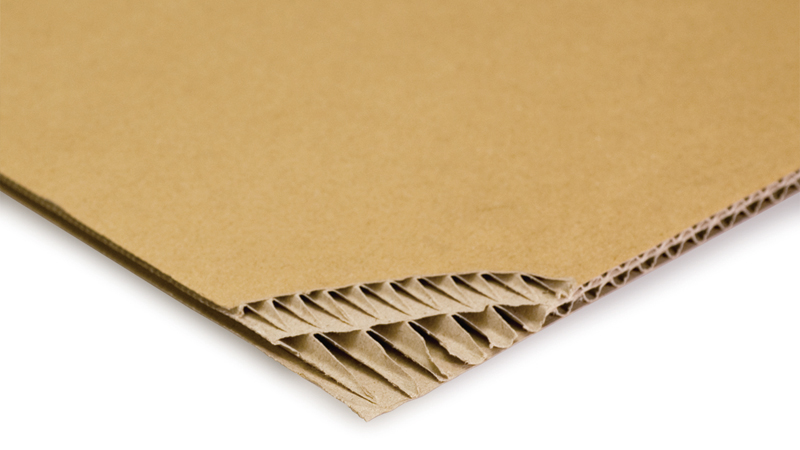Corrugated Cardboard
段ボール
Danbōru
CATEGORIES
Corrugated cardboard is made of thick, hard paper (paperboard) and consists of a corrugated core with a liner on one or both sides. The characteristic wave-shaped layer is called the flute. Corrugated cardboard is divided into types based on the number of flute layers and liners, and each type has different uses and capacities. Under Japan Industrial Standards (JIS), they are classified into A flute, B flute and C flute based on the number of flute layers in every 30cm. In addition, they are also specified by construction such as single face (with a liner on 1 side only), single wall and double wall boards, etc. There is also a type called honeycomb cardboard with a honeycomb shaped core. These look a little different to ordinary cardboard and are extremely strong.
Due to its wave-shaped structure, corrugated cardboard has a distinct feel, thickness and roughness to it as well as cushioning properties. Furthermore, being a light and strong board, it is also used in three-dimensional structures and as interior material, and holds much potential for solving environmental issues.
Today, corrugated cardboard is mostly made into boxes for packaging but in the UK in the mid-19th century, it was originally used as sweat-absorbent padding on the inside of top hats. Later, it came to be used in the US as cushioning material to prevent bottles breaking and then as transport containers, and that is how they are still used to this day. Corrugated cardboard can be purchased at art supply stores and shops that handle packing materials.
RELATED PAGES


 Single face corrugated cardboard
Single face corrugated cardboard Single wall (double face) corrugated cardboard
Single wall (double face) corrugated cardboard Double wall corrugated cardboard
Double wall corrugated cardboard Honeycomb cardboard
Honeycomb cardboard
